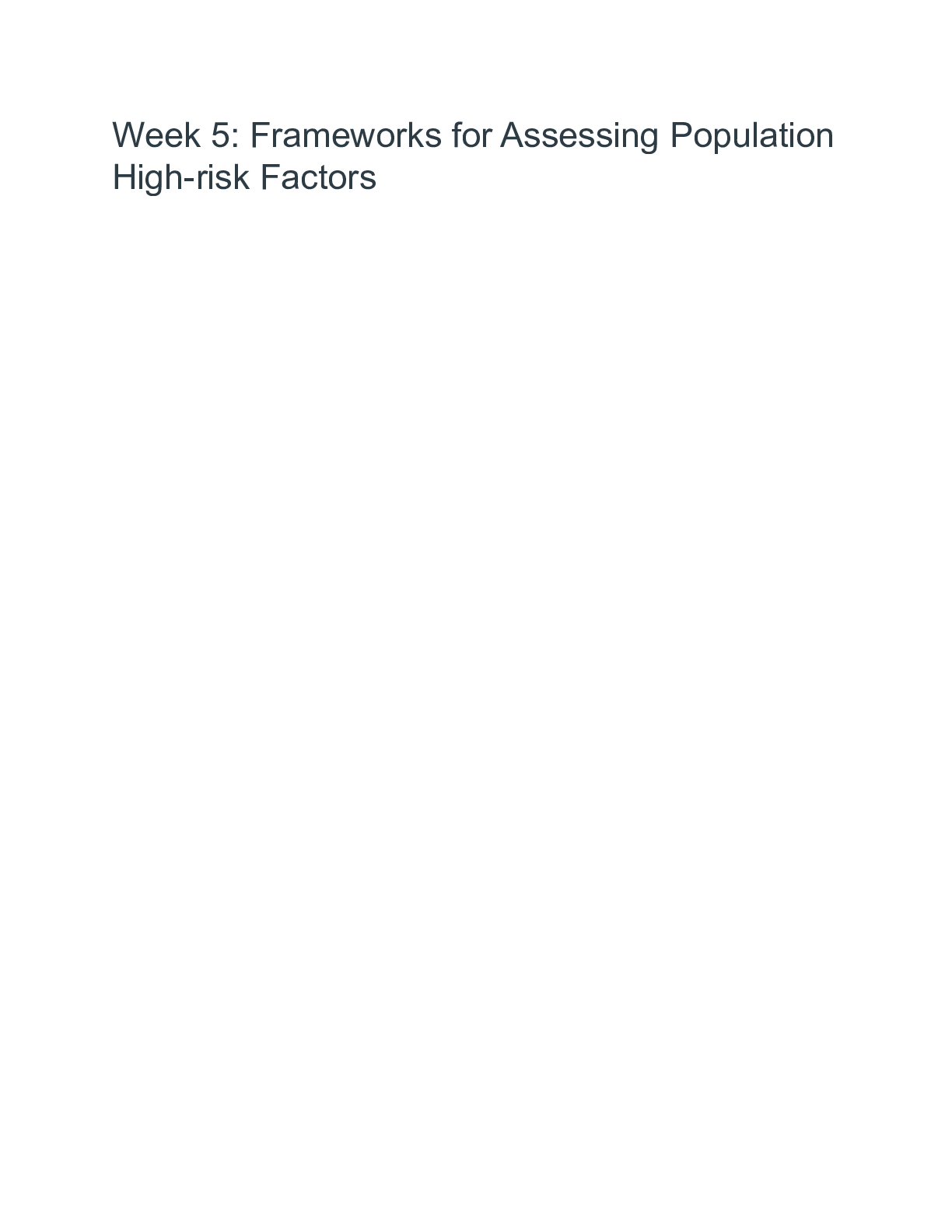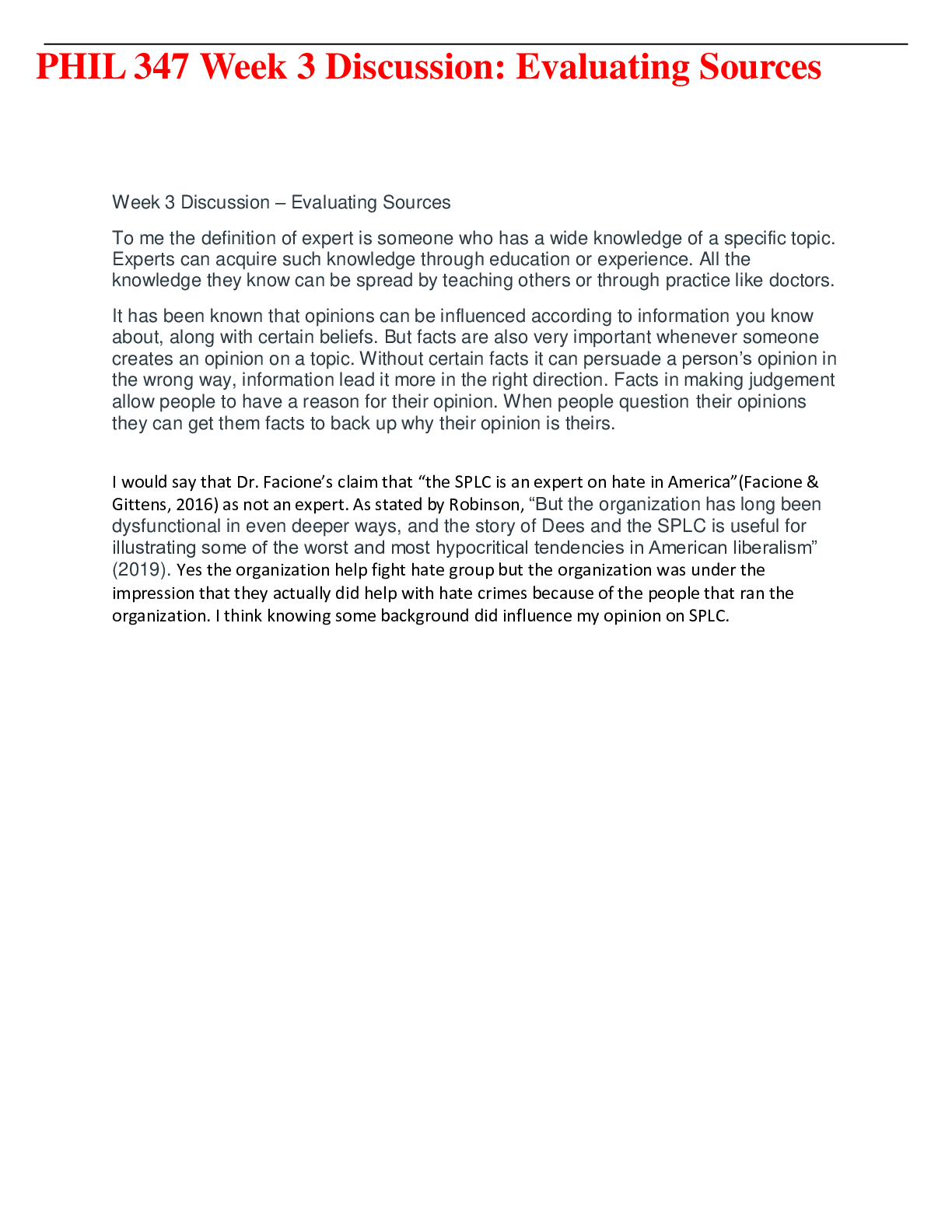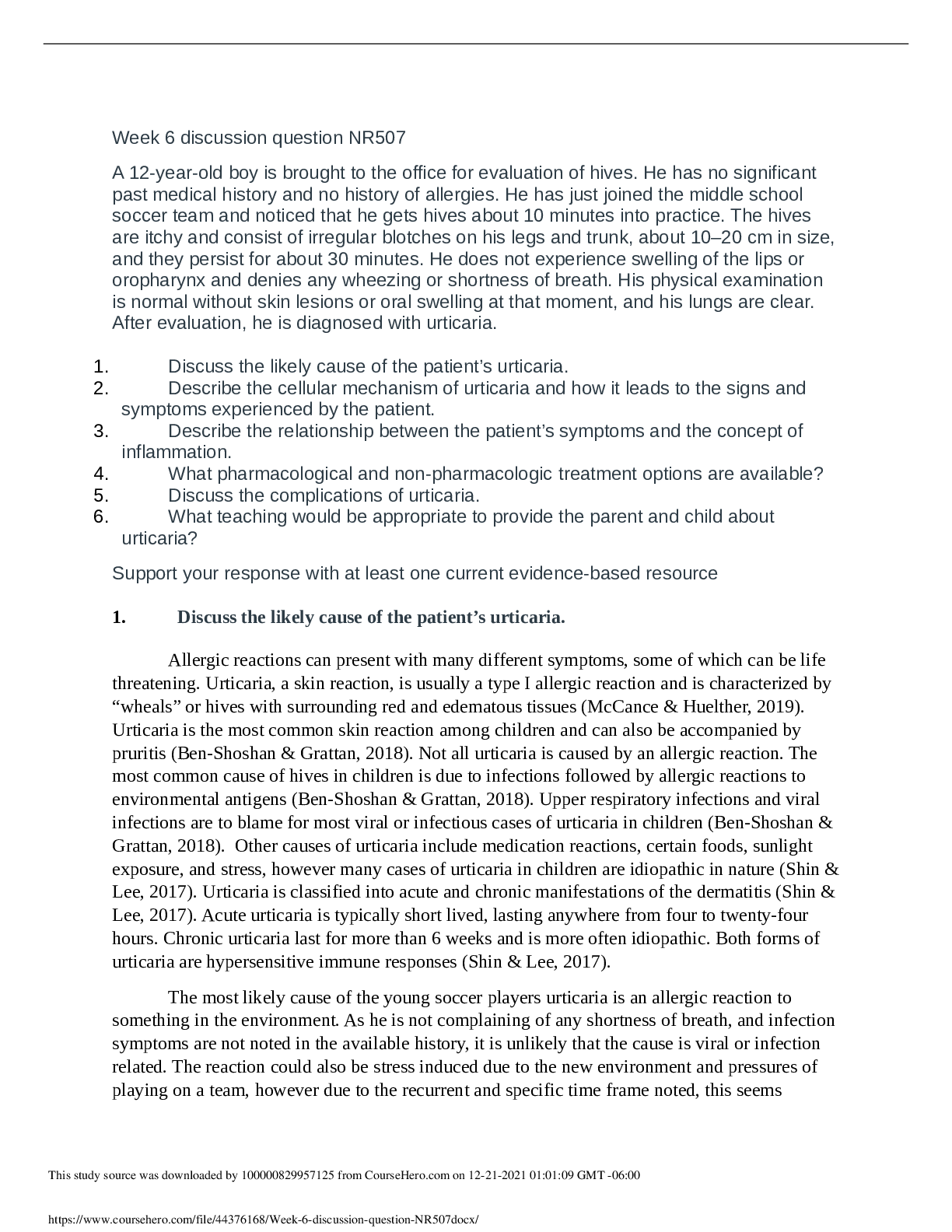*NURSING > DISCUSSION POST > NR 509 Week 3 class discussion – Chamberlain College of Nursing | Neurologic, Musculoskeletal, and (All)
NR 509 Week 3 class discussion – Chamberlain College of Nursing | Neurologic, Musculoskeletal, and Cardiopulmonary Assessment
Document Content and Description Below
NR 509 Week 3 class discussion – Chamberlain College of Nursing Week 3: Neurologic, Musculoskeletal, and Cardiopulmonary Assessment 11 unread reply.6464 replies. Using a friend, family member, ... or colleague, perform a neurovascular (include all cranial nerves), musculoskeletal, and cardiopulmonary (includes the heart, lungs, and peripheral vasculature) exam. Document the physical examination findings in the SOAP note format. Even though your patient may have abnormal findings, you must document the expected normal exam findings for the system. If you would like to include the abnormal findings they should be noted in parenthesis next to the normal expected findings. The complete subjective and objective sections must be included. You may include the assessment and plan portion of the SOAP note, but these sections will not be graded. You should devise a chief complaint so that you may document the OLDCART (HPI) data. You must use the chief complaint of headache, back pain, and cough. You should also focus the ROS based on the patient’s chief complaint and the body systems being examined. Refer to the SOAP Note Format document in Course Resources as necessary. This will be the same format that faculty will follow during the immersion weekend. * There are videos of the exams to be performed at immersion in Modules → Introduction and Resources→ Immersion section. Also the immersion evaluation forms are located in the Course Resources section. They should be reviewed and practiced often. This topic was locked Jul 23 at 11:59pm. Search entries or author Filter replies by unread Unread Collapse replies Expand replies Subscribed • Tiffany Lunsford Tiffany Lunsford Jul 16, 2017Jul 16 at 7:20pm Manage Discussion Entry Class, Welcome to week Three! This week, we are focusing on neurological, musculoskeletal and cardiopulmonary exams. Please follow the discussion question and grading rubric closely, I have also posted additional helpful guidance. Please remember what goes in the ROS (Subjective) vs. the Physical Exam (Objective). Here are the following course outcomes to assist in focusing this week: 3: Demonstrate knowledge required to perform a focused health history and examination for developmental, gender-related, age-specific, and special populations. (PO 1, 5) 6: Differentiate normal from abnormal findings. (PO 1, 4) 8: Adapt history and physical examination to the needs of the patient, i.e., pediatric versus geriatric patient (PO 1,4,7) Class, I wish to give some extra guidance to practicing, performing the assessments and posting your assessment for Neurological, Musculoskeletal and Cardiopulmonary systems. These systems should include detail of what all findings (normal or if your patient is with abnormal findings) would include for each of the assigned systems. When assessing the neurological system one area for example of detail would be cranial nerves which should include listing each one of them with some identification that shows that you know the assessment test for each cranial nerve. This detail should also be applied to other aspects of the Neurological examination such as finger to nose, heel to shin test, reflexes, level of consciousness, motor function etc…many more to include…please refer to both texts for other areas to be included. Cranial Nerve example (not all inclusive): no deficit to sense of smell (Olfactory CN1) upon the patient patent nares through ability of sniffing bilateral nares, able to identify odors such as coffee and peppermint. For Musculoskeletal, it goes beyond inclusion of range of motion and should include all maneuvers that show no deficits/deficits (upper and lower extremities, cervical spine- as well as other aspects of the MS exam). MS example (not all inclusive): ballottement, bulge sign, phalen test, ROM all areas (with degrees), McMurray, valgus, drawer, noted or not noted Genu varum etc…..please refer to both texts for other areas to be included. Cardiovascular example (not all inclusive): physical exam to the thorax, lungs, and vascular system. Many of you will be more comfortable with these areas because you have been wielding a stethoscope for some time. However, learning things like whispered pectoriloquy and broncophony (not all inclusive items to include) take practice. Please ensure to read assigned readings and watch the video for this week. Doing this assignment in such detail will help at Immersion weekend when you have to show knowledge of these assessments and how to perform each test! Note about diagnosis/differential diagnoses: the primary diagnosis should be included in the assessment while if there are any other differential diagnoses being considered; students should list them in the treatment plan. Dr. Lunsford • Collapse SubdiscussionSarah Gray Sarah Gray Jul 17, 2017Jul 17 at 3:16pm Manage Discussion Entry Dr. Lunsford and Classmates Patient Information: JNG,38, Male, Caucasian, United Healthcare S. CC “Headache, back pain and cough” HPI: Headache: Onset: 1 week ago Location: temporal area Duration: on and off Characteristics: throbbing and pressure feeling behind eyes Aggravating Factors: reading and too much screen time Relieving Factors: dark and quit room Treatment: ibuprofen Back pain: Onset: 3 weeks ago Location: Lumbar area both side of spine Duration: present most of the time, worse in the morning Characteristics: ache tight feeling, difficult to bend over at times, non-radiating Aggravating Factors: sedentary time Relieving Factors: going for a walk and stretching Treatment: ibuprofen Cough: Onset: 3 days ago Location: chest Duration: on and off throughout day Characteristics: dry nonproductive, self-limiting Aggravating Factors: talking too much Reliving Factors: rest and hydration Treatment: none Current Medications: Nexium 2o mg daily for acid reflux Chantix 0.5 mg per day for smoking cessation with 2 weeks left o Ibuprofen 400 mg every 6 hours as needed for back pain and headache Allergies: no known allergies to food or drugs and no know allergy to a specific environmental allergy. PMHx: o questionable GERD with no official diagnosis o appendectomy 30 years ago o wisdom teeth removed approx. 20 years ago o positive history of chicken pox, no other hospitalizations, o hepatitis B vaccine up to date, unknown last DTap o refused flu vaccine o high school graduate o every 6 month dental cleanings o Soc Hx: JNG is a waiter at a restaurant and a culinary arts student, playing guitar and writing music are JNG hobbies, rescued a puppy one year ago, he is a recovering alcoholic for 4 years and is working toward quitting smoking with Chantix, no other elicit drugs, JNG is married with no children, JNG states dinking an adequate amount of water and eats a healthy diet including fruits and vegetables, JNG used to run 3 miles 4 days a week but is no longer able to. He wears his seatbelt all the time, He lives in an apartment and smoke detectors and co2 detectors are in working order. JNG is red headed, fair complexion and has many freckles and regular use of sunscreen encouraged. Fam Hx: o paternal grandfather: Barrett’s esophagus, PVD with amputation o Paternal grandmother: passed from unknown cancer o Maternal grandparents: unknown health history\ o Father: no health issues o Mother: alcoholic, tremors with undiagnosed reason, anxiety o Brothers: adopted with no health issues ROS: CONSTITUTIONAL: No weight loss, fever, chills, sleep disturbances, night sweats, weakness or fatigue. HEENT: o Head: no trauma or dizziness, headache present o Eyes: No visual loss, blurred vision, double vision or yellow sclerae glasses present. o Ears: no hearing loss, dizziness, pain or discharge o Nose: present, no drainage, o Throat: no bleeding gums, voice changes swallowing difficulty, or sore throat, dental appliance present SKIN: no rash, many freckles noted CARDIOVASCULAR: No chest pain, chest pressure or chest discomfort. No palpitations or edema, dyspnea, orthopnea, syncope or edema, no leg pain or swelling, RESPIRATORY: No shortness of breath sputum. Nonproductive cough present, quit smoking 3 month ago after 20+ year pack a day, GASTROINTESTINAL: No anorexia, nausea, vomiting, melena or diarrhea, 1 soft BM every day, no jaundice, GENITOURINARY: no burning or frequency with urination, steady easy to start stream NEUROLOGICAL: No dizziness, syncope, paralysis, seizure, ataxia, numbness or tingling in the extremities. No change in bowel or bladder control. No difficulty speaking or swallowing MUSCULOSKELETAL: No muscle, joint pain or stiffness, swelling, instability, able to perform ADL’s and work safely, Lumbar region back pain HEMATOLOGIC: No anemia, bleeding or bruising. LYMPHATICS: No enlarged nodes. No history of splenectomy. PSYCHIATRIC: No history of depression or anxiety, Positive history of alcoholism ENDOCRINOLOGIC: No reports of sweating, cold or heat intolerance. No polyuria or polydipsia. ALLERGIES: No history of asthma, hives, eczema or rhinitis, worse congestion with outdoor time O. Physical exam: Vital sign: BP 120/80, HR 84, RR 20, Temp 98.7 F, o2 sat 98% on RA Constitutional: appears well developed, healthy weight, well kempt, alert and oriented x4 HEENT: o Head: appropriate size, shape, symmetry, scalp and hair well intact, o Eyes: PERRLA, intact extraocular movement, conjunctiva clear, red light reflex present o Ears: Bilat tympanic membrane gray, translucent and intact, no tenderness or inflammation, whisper test passed bilat, (wax present R>L) o Nose: no discharge, olfactory sense intact, (tenderness present over frontal and maxillary sinuses, inflammation noted bilat) o Throat: no erythema, drainage or abscess present, mucosa moist, gums intact, pharynx midline o Skin: no lesions, bruises or open areas, (scar to right lower quad of abdomen, rash to upper back) Cardiovascular: Heart rate and rhythm regular, no murmur, click, rubS3, S4, or gallop present, no edema, no JVD, no visible pulsations, heave or lift present, Pulses present and palpable 2+, no carotid bruit, apical impulse present at 5th ICS MCL, extremities are warm and pink, no swollen lymph nodes, Respiratory: Chest symmetrical, tactile fremitus equal bilaterally, no tenderness, lumps or lesions, resonance noted equally bilaterally, Lung sound clear without wheeze or rales, no SOB, Gastrointestinal: abdomen soft and flat, bowel sounds present x 4, no bruit noted, liver span 12 cm, splenic dullness noted, not palpable, no CVA tenderness, no other organomegaly or masses noted Genitourinary: No hernia, nodules, rashes, or discharge Neurologic: Mental status: Alert and oriented X4, answers question appropriately, recent and remote memory intact. Cranial nerves: o I: olfactory nerve intact, able to smell alcohol pad o II: Vision 20/20 bilaterally, peripheral fields intact by confrontation, optic fundus normal bilaterally o III, IV, VI: extraocular movement by cardinal positions of gaze intact bilaterally, no ptosis or nystagmus noted, PERRLA with pupil size of 2mm, palpebral fissures equal bilaterally, o V: Sensation intact bilaterally throughout face and equal jaw strength o VII: facial muscles intact and symmetric with smiling and puffed check test o VIII: whispered words heard bilaterally o IX, X: swallowing intact with positive gag reflex, uvula and soft palate rises midline, voice smooth and unstrained o XI: shoulder shrug, head movement intact and equal bilaterally, o XII: tongue midline with no tremors, lingual speech clear Motor Function: gait smooth and coordinated, tandem walk completed, negative arm drift with Romberg test, finger to nose and finger to finger smooth with eyes open and closed, no atrophy, weakness or tremors or contractures noted, full ROM of all extremities, Sensation: sharp, light and vibration intact to all extremities, Stereognosis: able to identify a safety pin, Kinesthesia intact Reflexes: bicep, tricep, brachioradialis, quadricep and Achilles reflex intact 2+, abdominal reflex intact, plantarflexion noted with plantar reflex Musculoskeletal: No weakness, instability, gait disturbance, ROM intact and equal, no joint swelling, tenderness or redness, no spinal deviation, movement smooth with no crepitus noted, equal strength to all extremities and able to maintain flexion with resistance Lymphatic: no enlarged lymph nodes, lymphedema Psychiatric: appears calm and cooperative with exam, asking appropriate questions In summary, this patient demonstrated a normal neurological and musculoskeletal exam with no worsening of symptoms. The headache relates mostly with a tension-type headache because there was no nausea, photophobia or phonophobia noted with migraines. Patients complaining of a headache that demonstrate a normal neurologic exam do not require further imaging or laboratory testing. Symptoms to take more seriously regarding a headache would include patient complains of first or worst headache, headache induced by cough or exertion, change in personality, older than fifty or tenderness over temporal artery (Hainer & Matheson, 2013). Managing his back would also not include imaging studies at this time but treatment with pharmacotherapy, cognitive behavior therapy, spinal manipulation and/or lifestyle modification should be initiated. NSAIDS and muscle relaxants would be my first choice but if ineffective an opioid would be indicated. I would request a CMP to ensure his kidneys are in good working order with his recent use of ibuprofen and before initiating NAIDS (Herndon, Zoberi, & Gardner, 2015) - - - - - - - - - - - - - - - - - - - - - - - - - - -- -- - - - - - - - - - - - - -- - - - Soc Hx: Patient works in an office doing accounts payable. She sits/stands in front of a computer most of the day. She types all day as well. She works around 45 hours a week. Major hobbies include working in her yard and cooking out with family. Patient has never smoked or used illegal drugs. She drinks socially. She always wears her seatbelt in vehicles. She has working smoke and carbon monoxide detectors in her home. Fam Hx: Patient is genetically predisposed to osteoporosis, hypertension, acid reflux from her mother. No history of cancer, stroke, or diabetes in her family. Brother passed away in vehicle accident as a teenager. Sister is living with no major illness. Father suffered from alcoholism for many years. Her daughter also has acid reflux. ROS: Constitutional- No unexplained weight loss, no fever or chills noted, denies weakness or fatigue HEENT- Eyes: Patient wears reading glasses. Had laser eye surgery in the past for near sightedness. Denies blurred or double vision, sclerae are white. Ears, Nose, Throat: No hearing loss or ear pain. Denies congestion, sneezing, runny nose, or sore throat. She did have a cold a few weeks ago with congestion, sneezing, and a runny nose. Skin- Skin is clear, dry, and intact. No rashes noted. No wounds noted. Cardiovascular- Denies chest pain, pressure, or discomfort. Regular heart rate. No palpations noted. No edema noted. Respiratory- Inspection of posterior chest shows straight spinal process, symmetrical thorax, and muscles appropriate for age. Chest expands symmetrically. Skin color is pink and dry. No cyanosis or pallor. No diaphoresis. Fremitus most prominent between scapulae and around sternum and decreases lower in back. Resonance noted over lungs during percussion. Breath sounds clear in all quadrants. (Breath sounds clear over right and left lower quadrant, and right upper quadrant upon auscultation. Wheezing and crackles noted over left upper quadrant). Breast sounds present in all quadrants. No decreased breath sounds. Inspection of anterior chest wall shows ribs sloping downward and symmetrical spaces. Skin is pink and dry. No cyanosis or pallor. Respirations are regular at 18bpm. No retractions noted. No tenderness upon palpation. Slight wheezing auscultated in left upper quadrant. No other adventitious sounds noted. Pulse ox reading is 98%. Gastrointestinal- Bowl sounds noted in all four quadrants. Stomach is round and soft. Denies anorexia, vomiting, nausea, or vomiting. No abdominal pain upon palpation. No blood in stool. Skin is pink and dry. Genitourinary- Patient is post-menopausal. Denies pain or burning upon urination. One full term pregnancy with live vaginal birth. Child is still living. Neurological- No headache, dizziness, syncope, paralysis, ataxia, or numbness and tingling in extremities. (Patient complains of headache). No change in bowel or bladder control. Pupils are equal and reactive to light. No memory problems. Denies mood change, depression, or suicidal ideations. Musculoskeletal- No muscle, joint, or back pain noted. Denies stiffness of muscles. (Patient states she has back pain, muscular, in the upper back). Spine appears straight upon inspection. No injury noted. Hematologic- No anemia or blood clotting disorders. No abnormal bleeding or bruising. Lymphatics- No history of splenectomy. No enlarged nodes upon palpation. (Patient has enlarged cervical nodes). Psychiatric- No history of depression or anxiety. Endocrinologic- Denies sweating, heat intolerance, cold intolerance, polyuria, or polydipsia. Allergies- No history of asthma, hives, eczema, or rhinitis. Differential Diagnosis: Acute Bronchitis- Often caused by a viral infection. Cough is the predominant symptom. Other symptoms are nasal congestion, mucus production, dyspnea, and headache. Fever is not usually present. Chest wall pain can also be present. Auscultation and chest x-rays are used for diagnosis. Antihistamines and decongestants are used in combination to treat. Albuterol nebulizer or inhaler is used to loosen mucus as well. This patient is complaining of cough, headache, and back pain. She does not have a fever and is not coughing mucus up (Kinkade, S., & Long, N. A. 2016). Pneumonia- This is a concern globally. Microorganisms invade the lower respiratory tract. It is often bacterial. Symptoms are fever, chills, dehydration, fatigue, sweating, coughing, and chest pain. This is diagnosed by chest x-ray, auscultation, or sputum samples, or blood cultures. Antibiotics are often used to treat pneumonia. Albuterol inhalers and nebulizer can be used to treat cough as well (Colloniz, C., Martin-Loeches, I., Garcia-Vidal, C., San Jose, A., & Torres, A. 2016). References Colloniz, C., Martin-Loeches, I., Garcia-Vidal, C., San Jose, A., & Torres, A. (2016). Microbial etiology of pneumonia: Epidemiology, diagnosis and resistance patterns. International Journal of Molecular Sciences,17(2120). doi:10.3390/ijms17122120 Kinkade, S., & Long, N. A. (2016). Acute Bronchitis. American Family Physician, 94, 7th ser., 560-565. Retrieved July 18, 20147, from http://eds.b.ebscohost.com.proxy.chamberlain.edu:8080/eds/pdfviewer/pdfviewer?vid=2&sid=51d37dd0-e01f-4029-b8cc-9204f3030d4d%40sessionmgr102Links to an external site. Jessica Allen PreviousNext [Show More]
Last updated: 1 year ago
Preview 1 out of 131 pages
Instant download
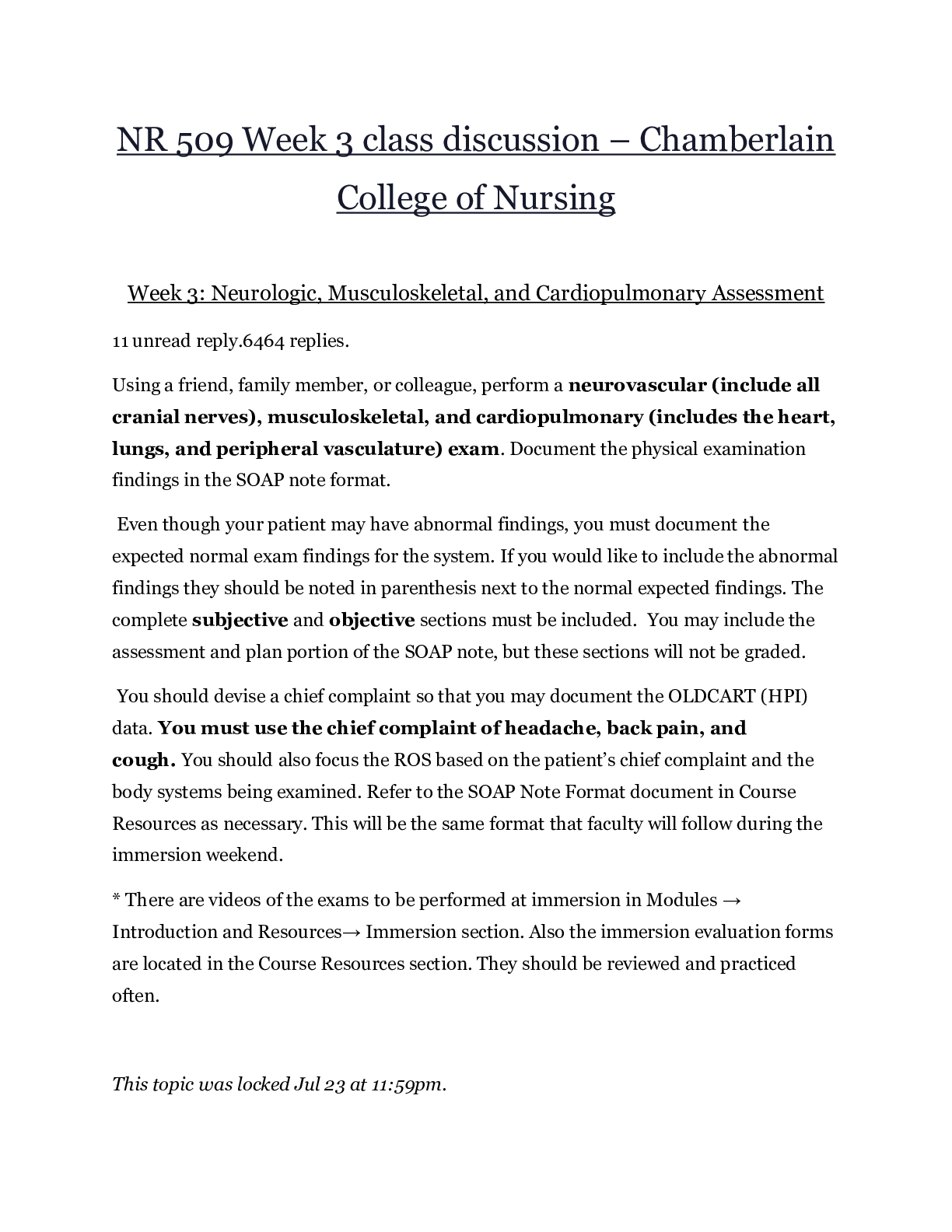
Buy this document to get the full access instantly
Instant Download Access after purchase
Add to cartInstant download
Reviews( 0 )
Document information
Connected school, study & course
About the document
Uploaded On
Jan 26, 2021
Number of pages
131
Written in
Additional information
This document has been written for:
Uploaded
Jan 26, 2021
Downloads
0
Views
35

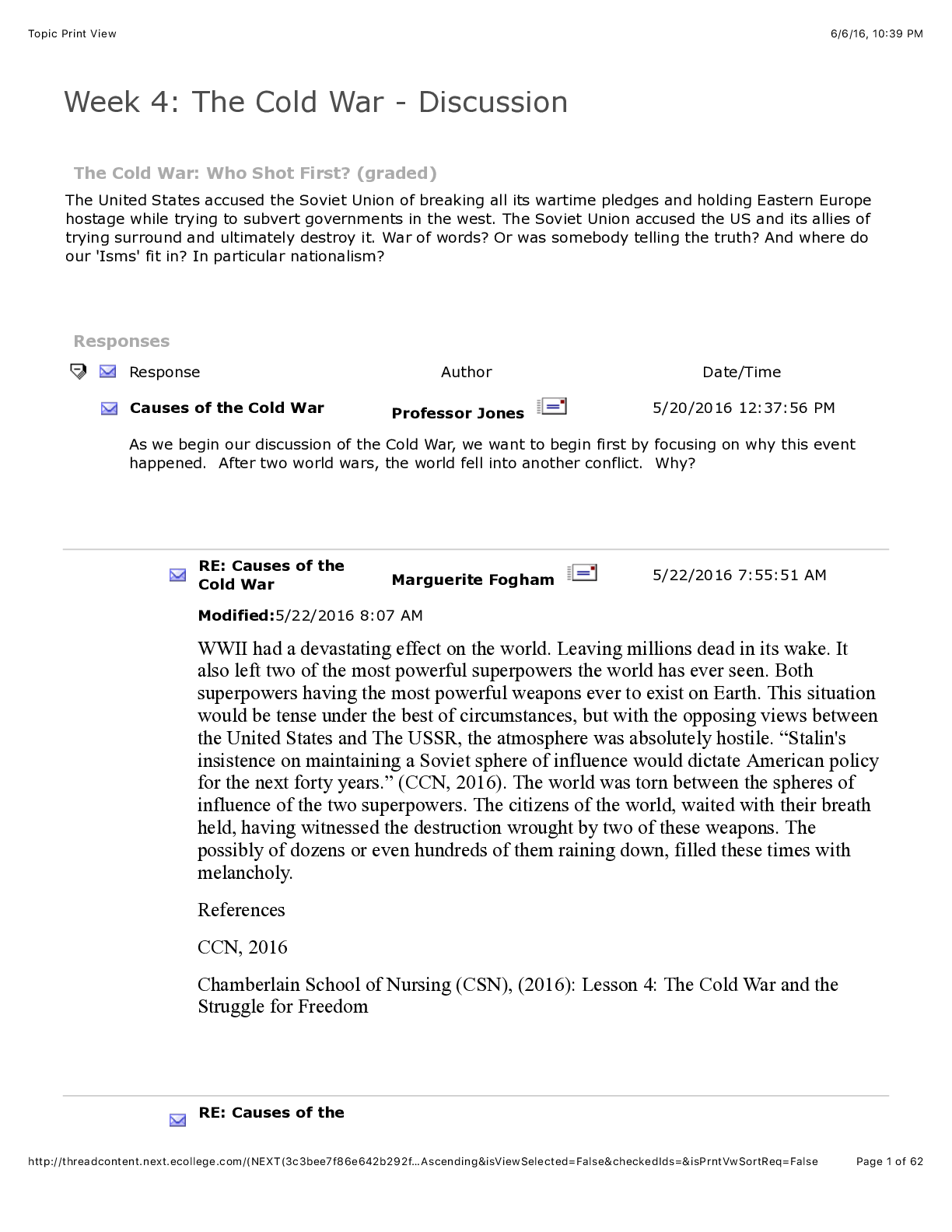
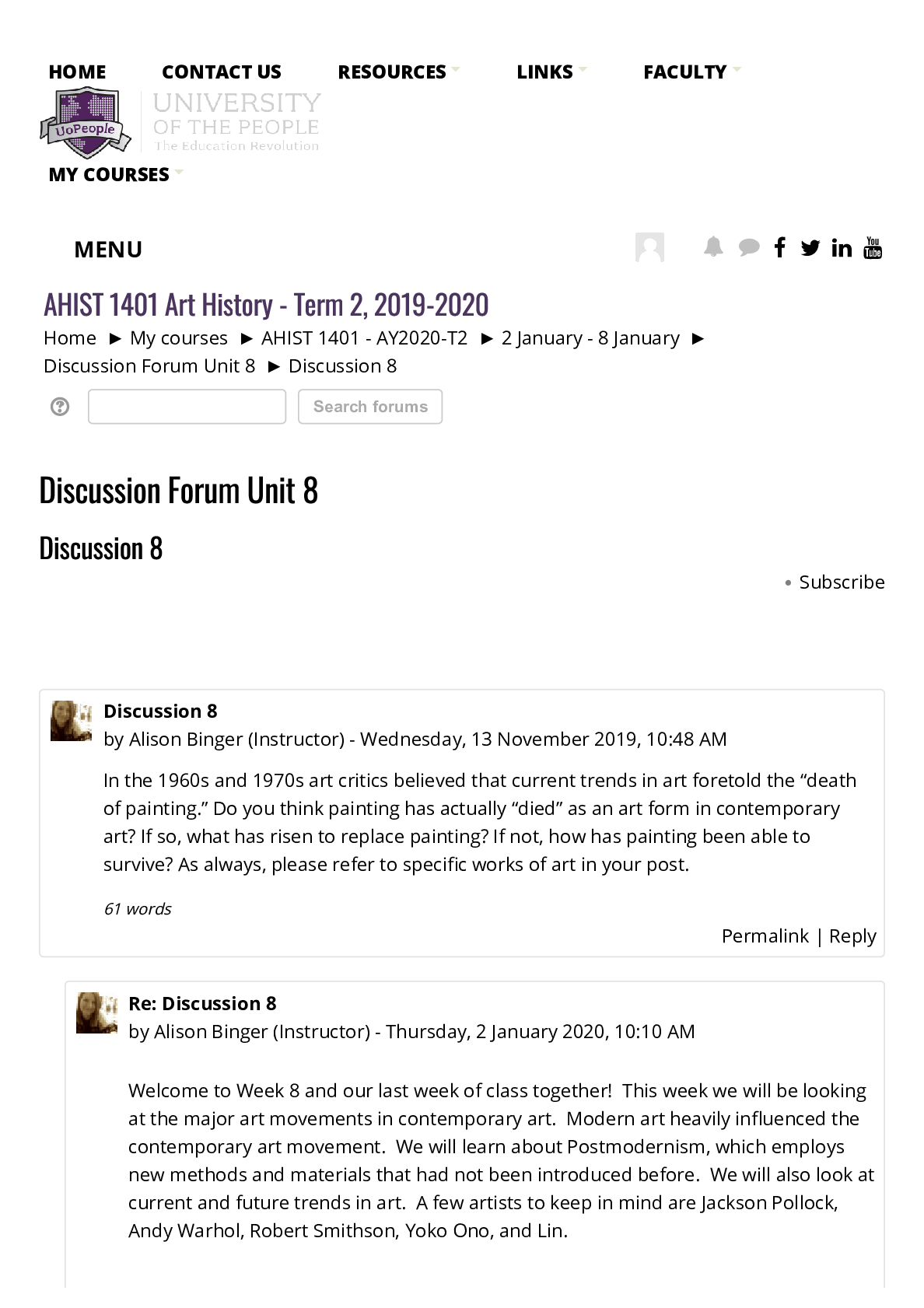
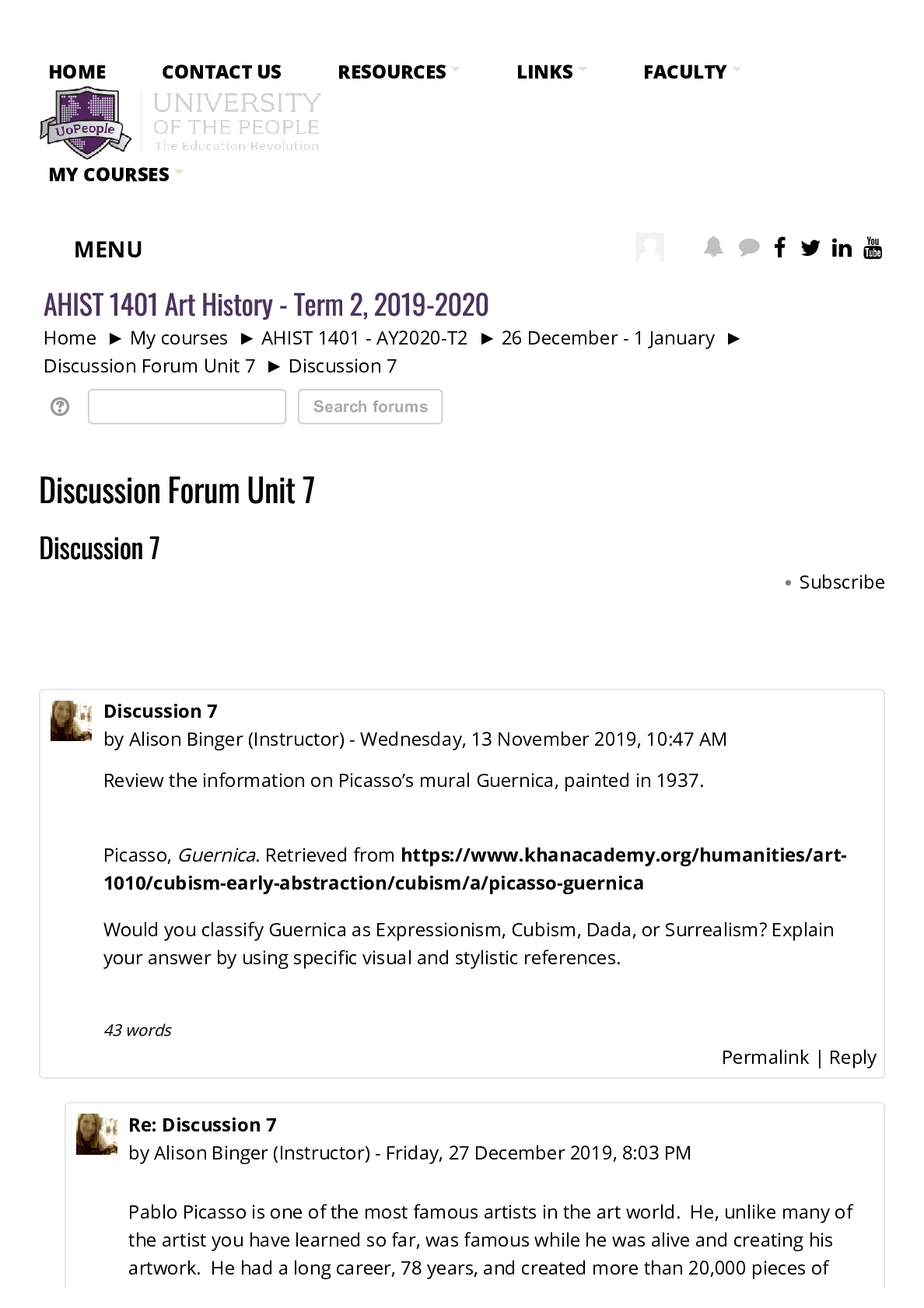
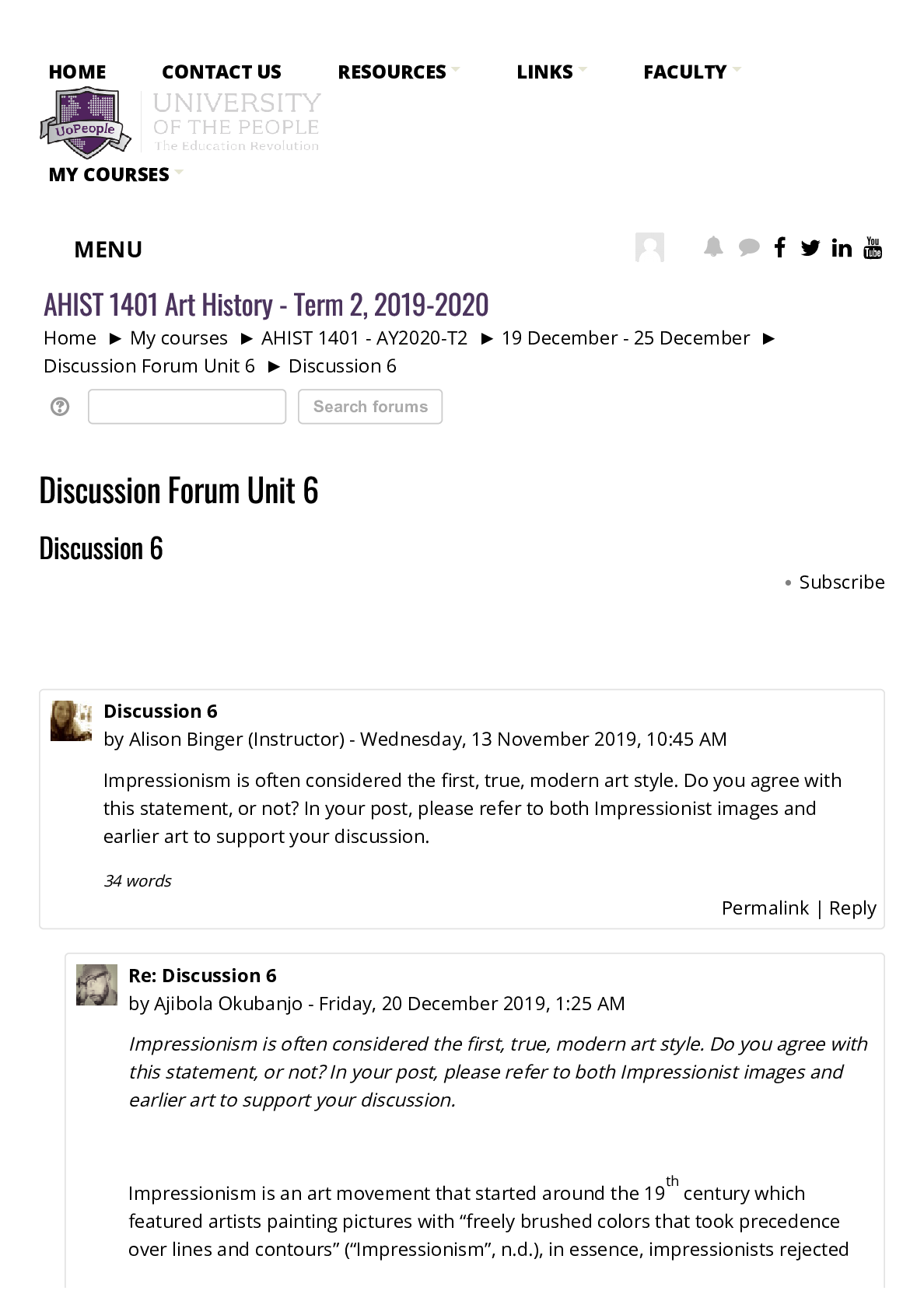

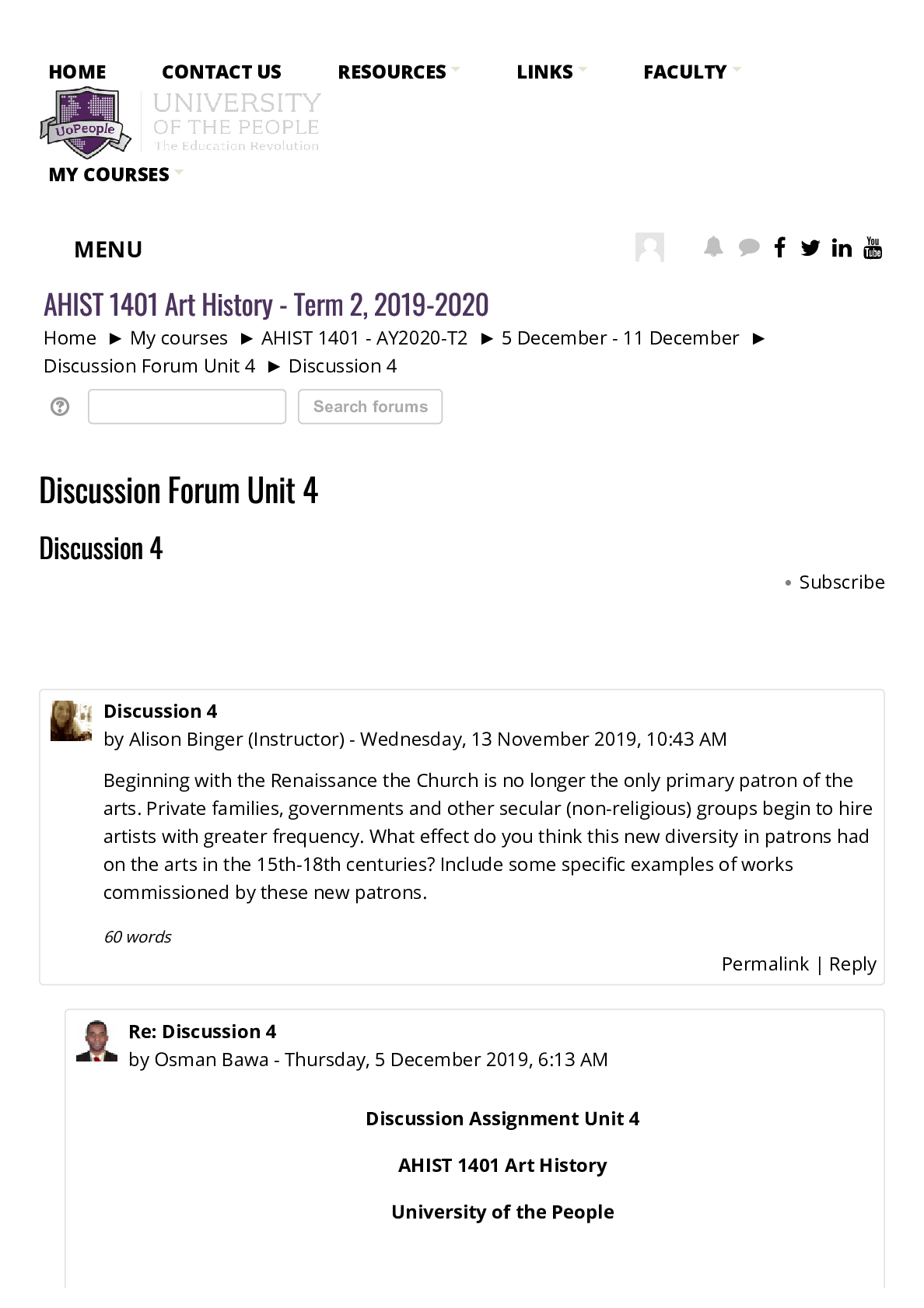
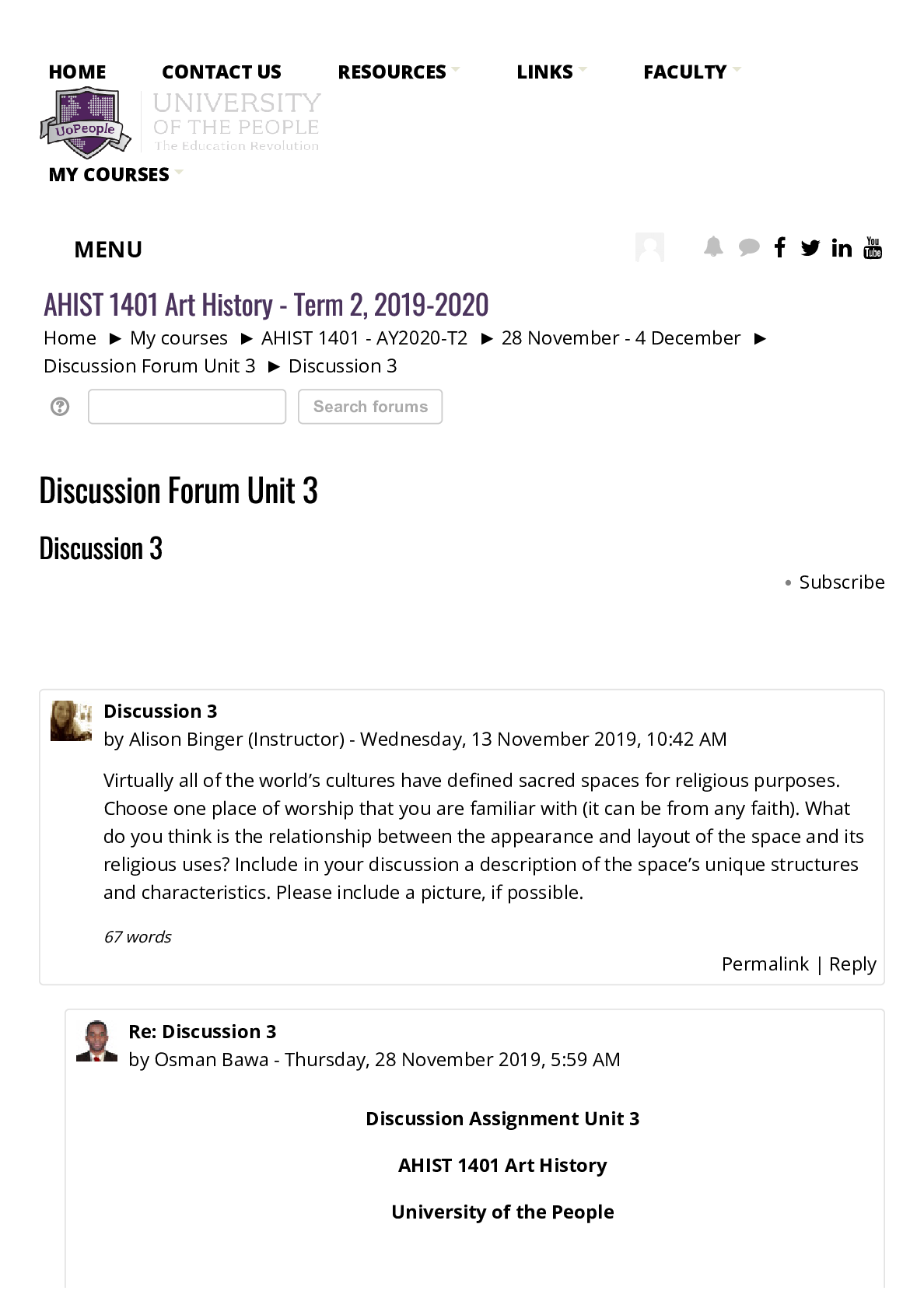


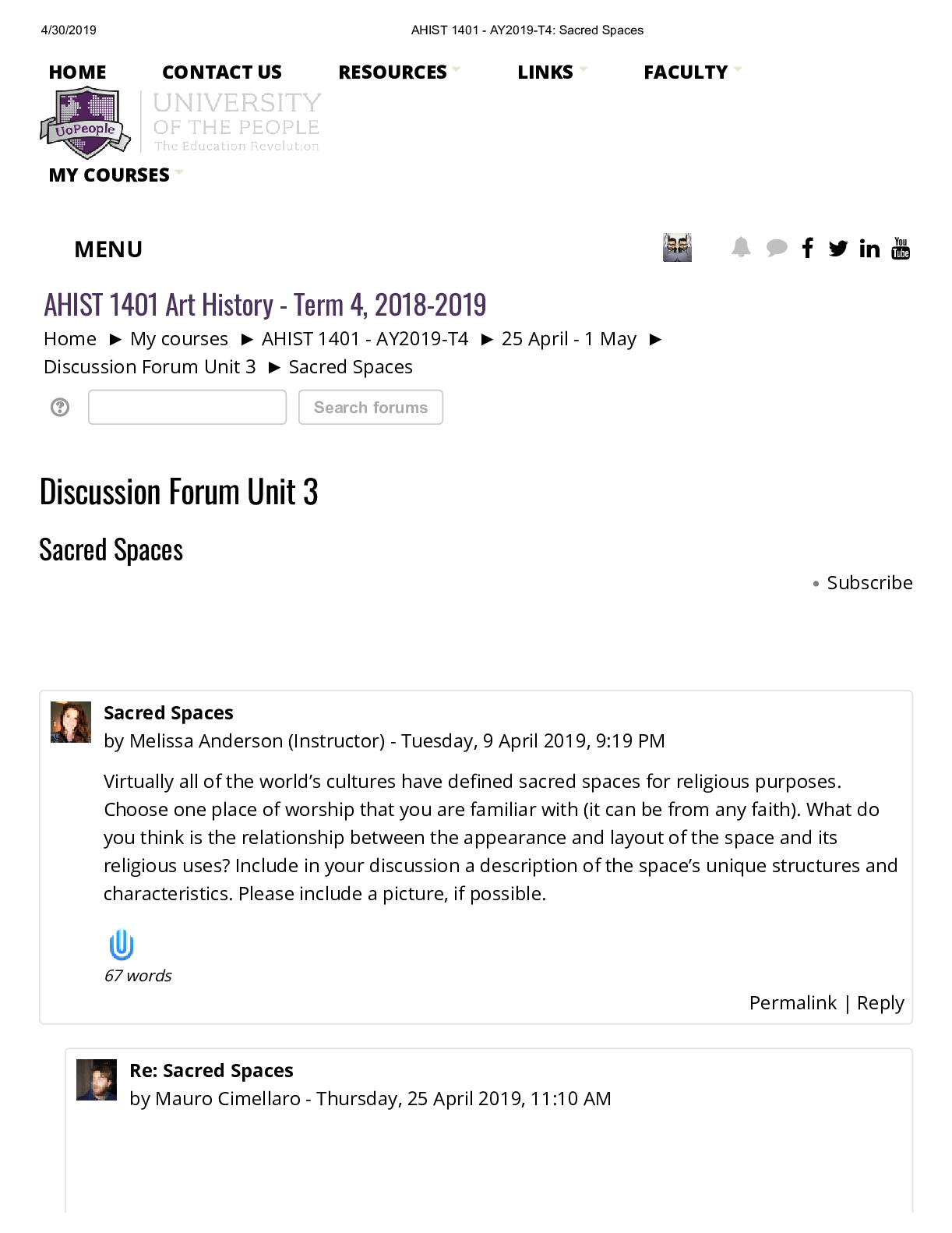

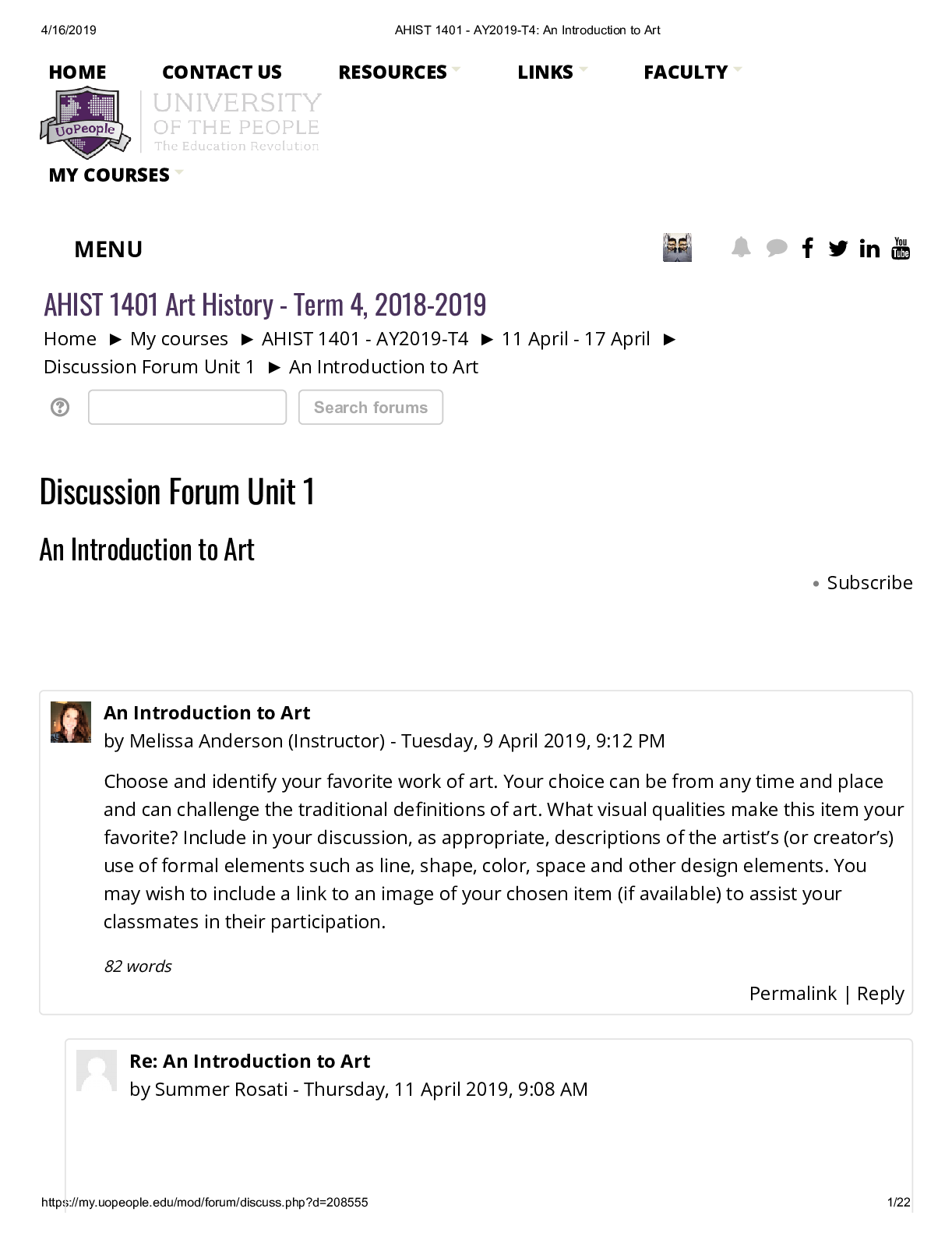

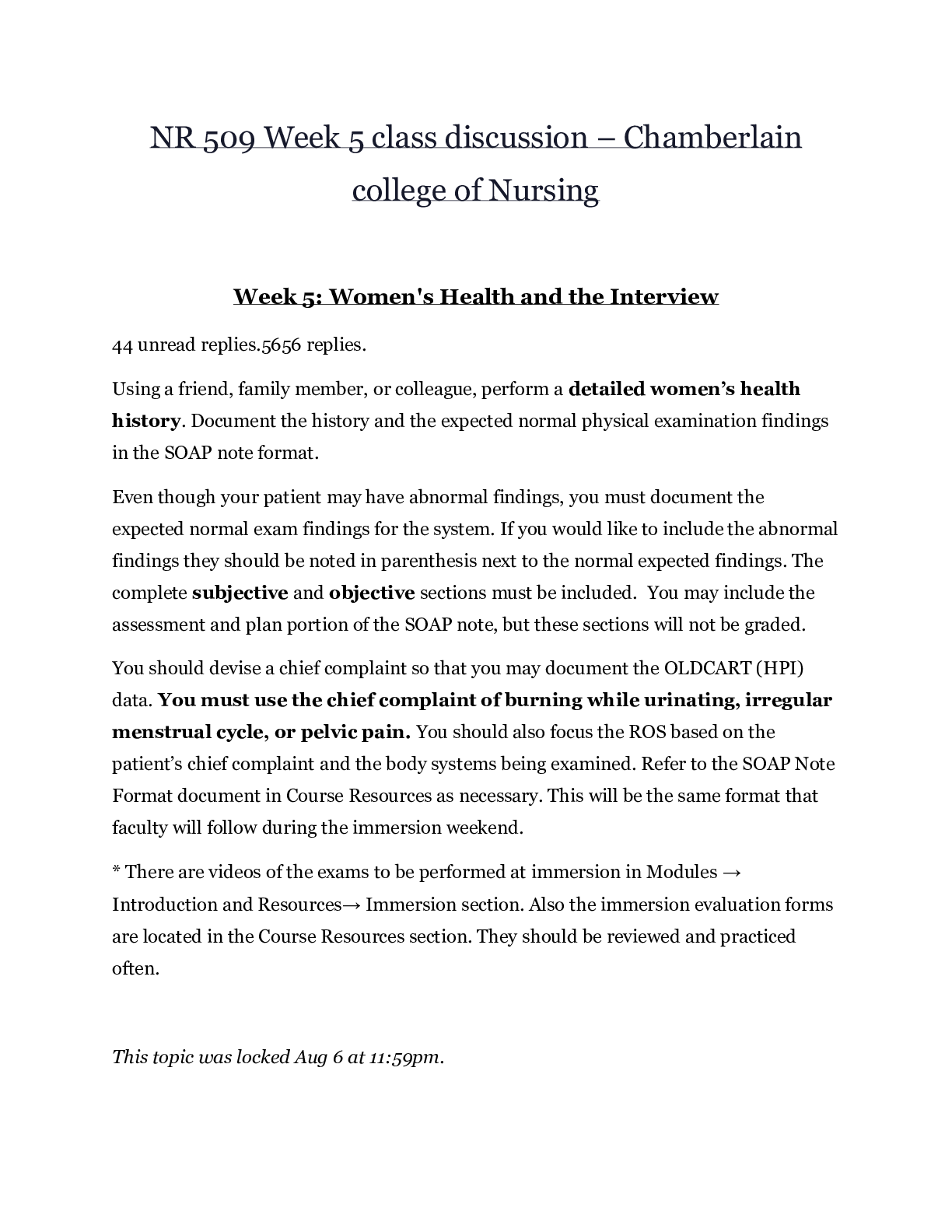
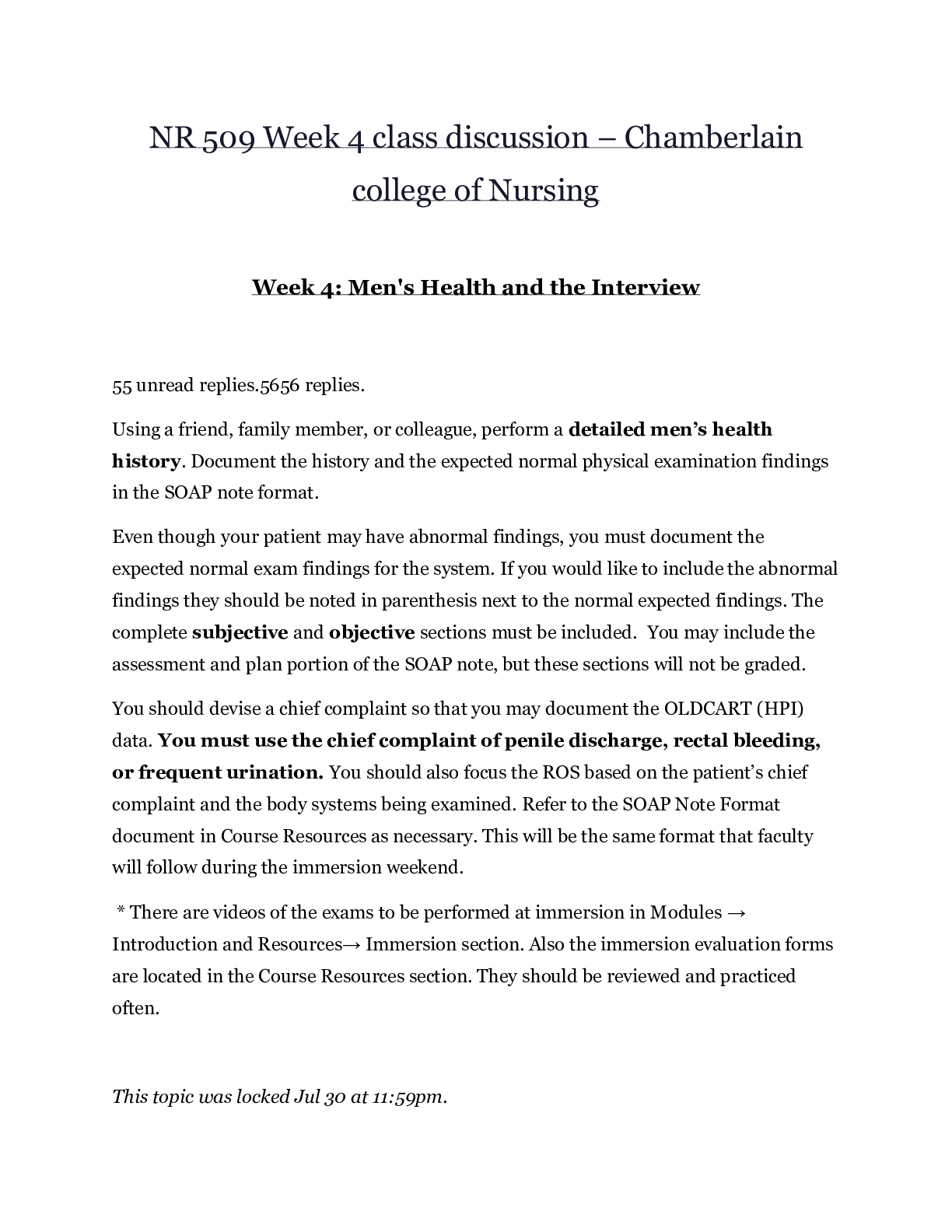
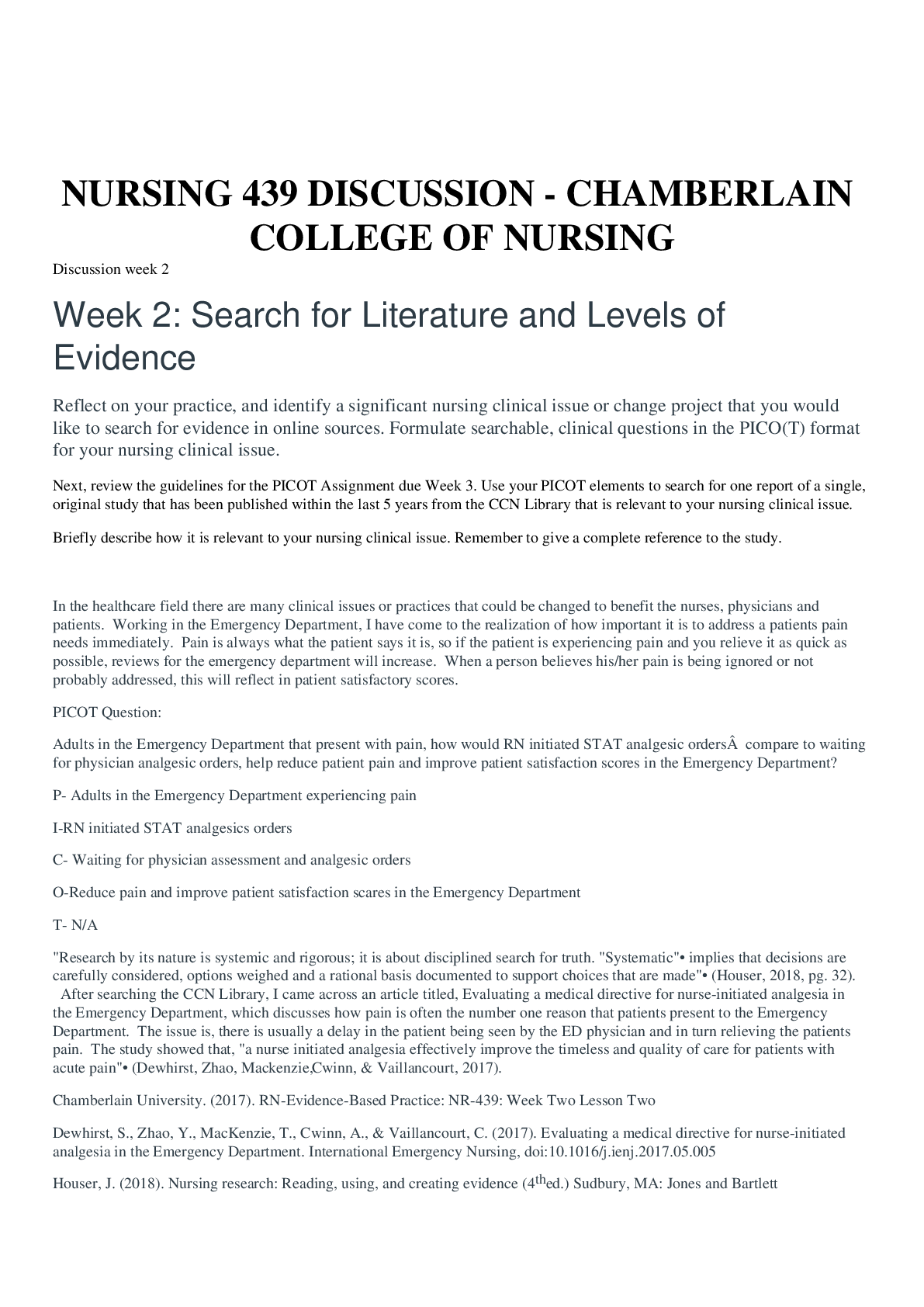
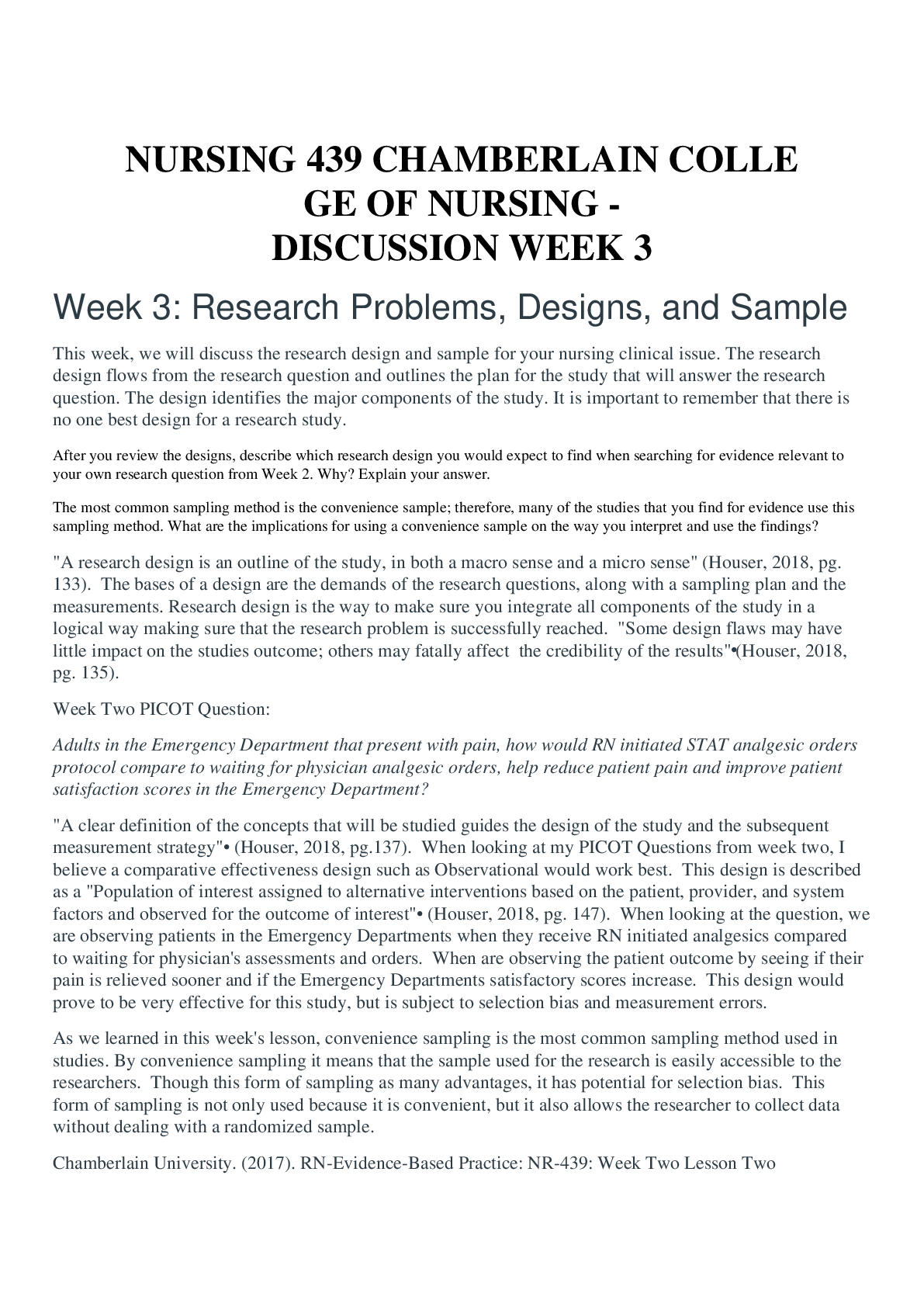
 – Chamberlain College of Nursing.png)
